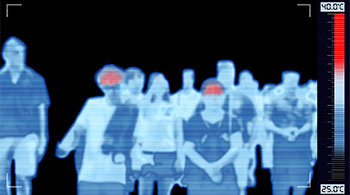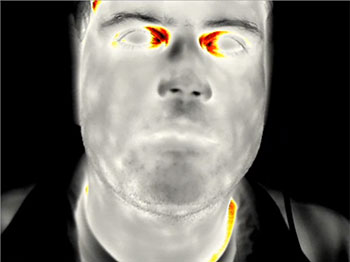Most of us have had our temperature checked at the entrance to stores or medical offices or other locations where they are trying to guard against exposure to the coronavirus. A forehead thermometer is often used, or for larger numbers of people, an automated thermal imaging system is installed to scan the faces of several individuals at once.
The problem with these methods of measuring your temperature is that they often get it wrong.
For these reasons, the FDA (Food and Drug Administration) on April 17, 2020 issued thermographic system recommendations based on the global standard established by the IEC (International Electrotechnical Commission) and ISO (International Organization for Standards) for “Fever Screening Technology”. IEC 80601-2-59:2017 states that all methods of measuring elevated skin temperature (EST) are unreliable.
IEC standard 80601-2-59:2017 also states that the only accurate method to measure human body temperature is at the inner canthi, which are the inner corners of the eyes, near the bridge of the nose. Elevated body temperature (EBT) reliably indicates the presence of a fever.
In addition, the FDA recommends that the measurement device or system:
1. Is tested and labeled consistent with the following standard: IEC 80601-2-59:2017: Medical electrical equipment – Part 2-59: Particular requirements for the basic safety and essential performance of screening thermographs for human febrile temperature screening
-OR-
2. Is tested using alternative performance specifications that provide similar results to IEC 80601-2-59:2017. This could include:
Many manufacturers and service providers claim to measure EBT but fail to satisfy the IEC standard and FDA recommendations. While fever screening checkpoints are not medical devices, they give businesses the opportunity to show customers, employees, and visitors that you care, and are putting measures in place to address their safety. If those measures are not accurate and reliable, it undermines the confidence of the people you want to reassure.
The Jogan Thermal Checkpoint™ meets or exceeds every standard, and measures EBT quickly, accurately, and reliably. Here’s how it works.


Measuring elevated skin temperature (EST) is unreliable according to the FDA

Elevated body temperature (EBT) is measured at the inner canthi (inner corners of the eyes, near the bridge of the nose)